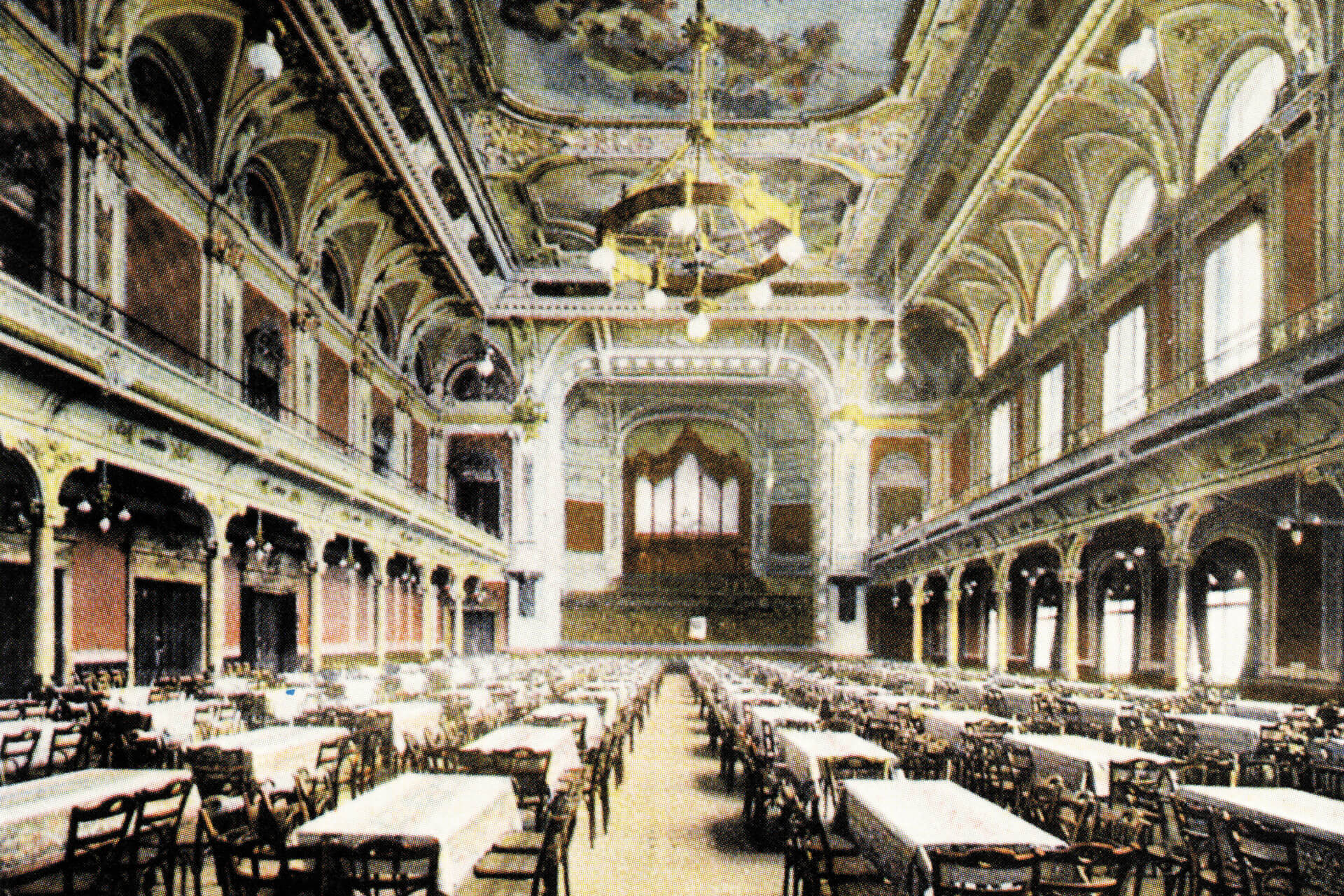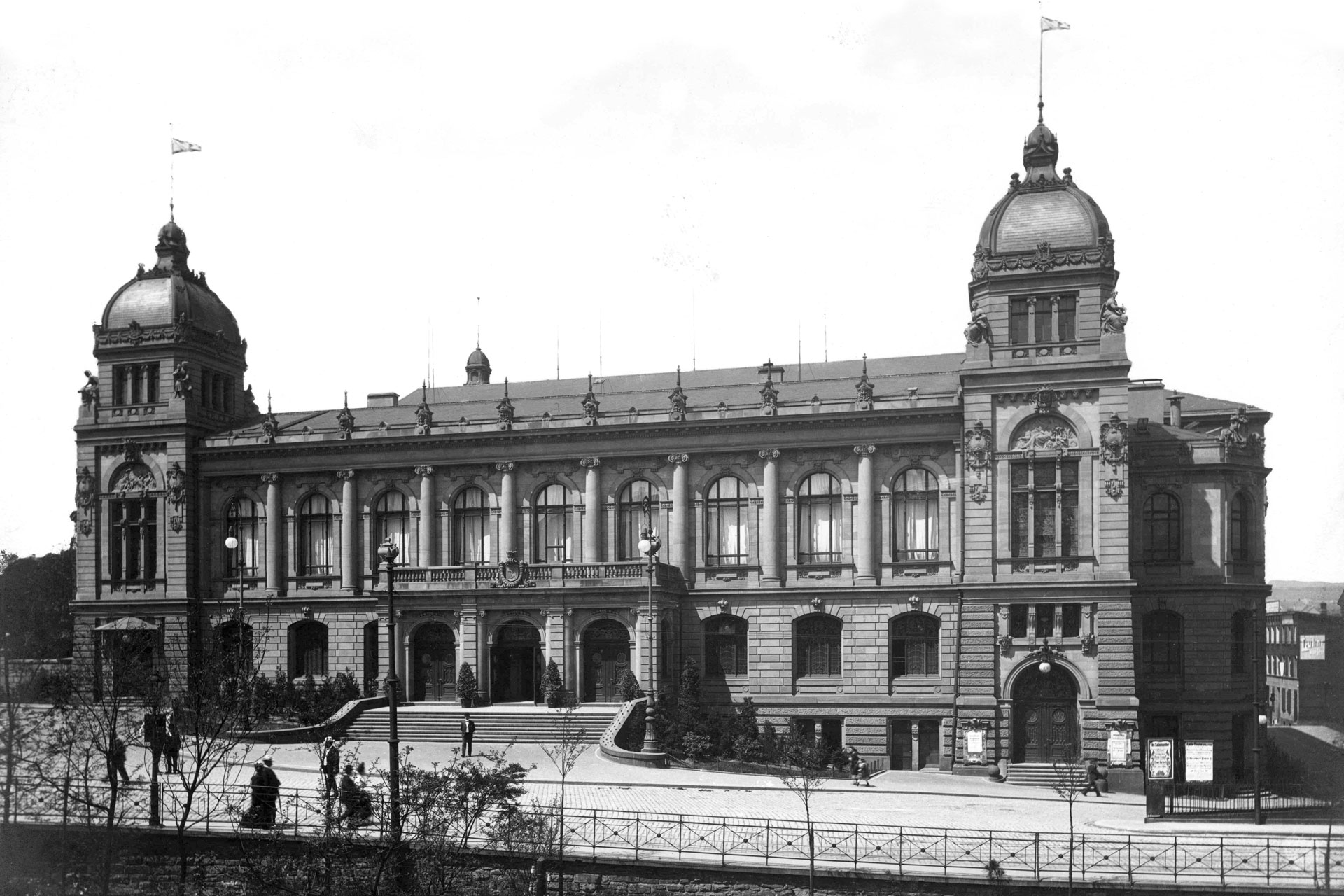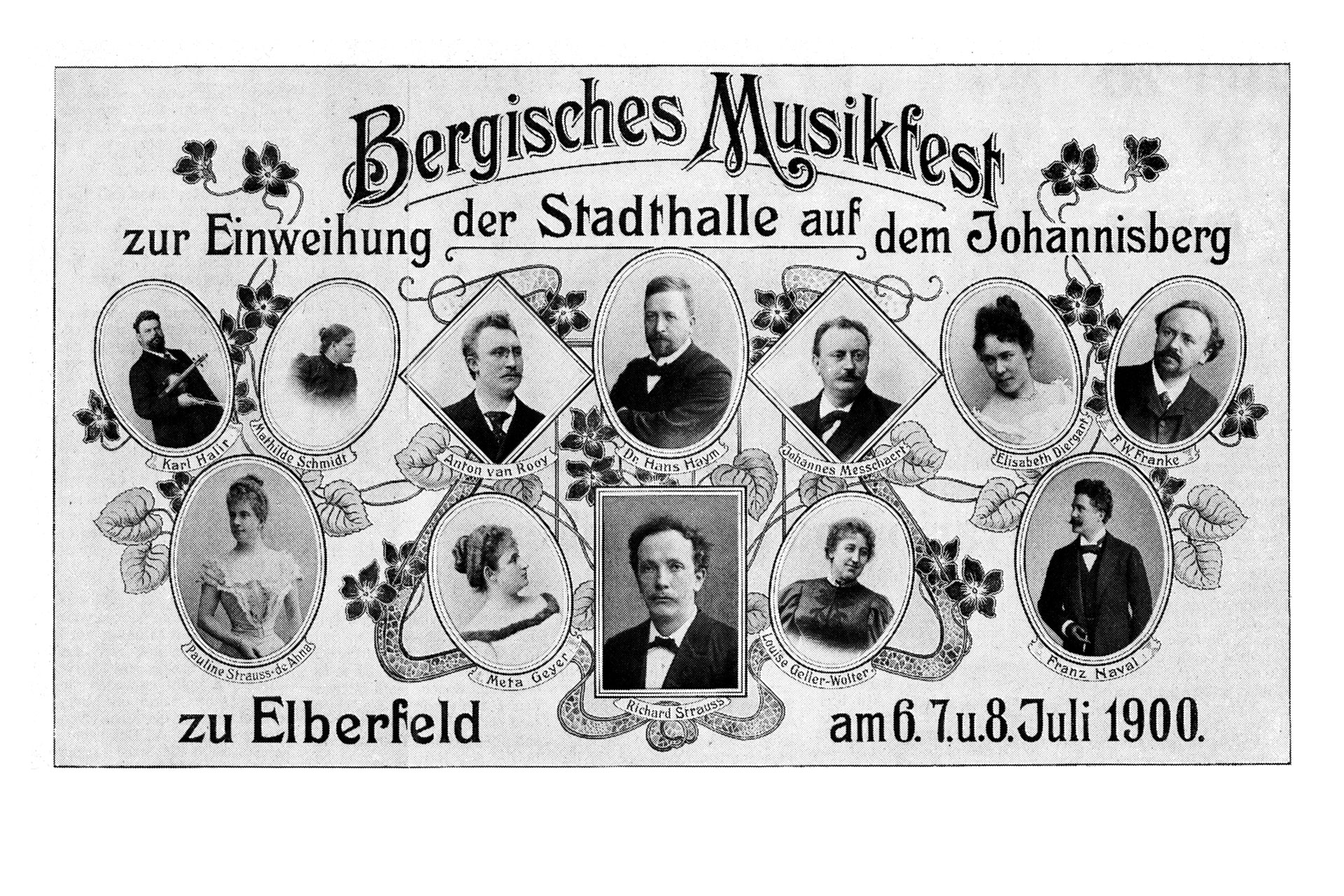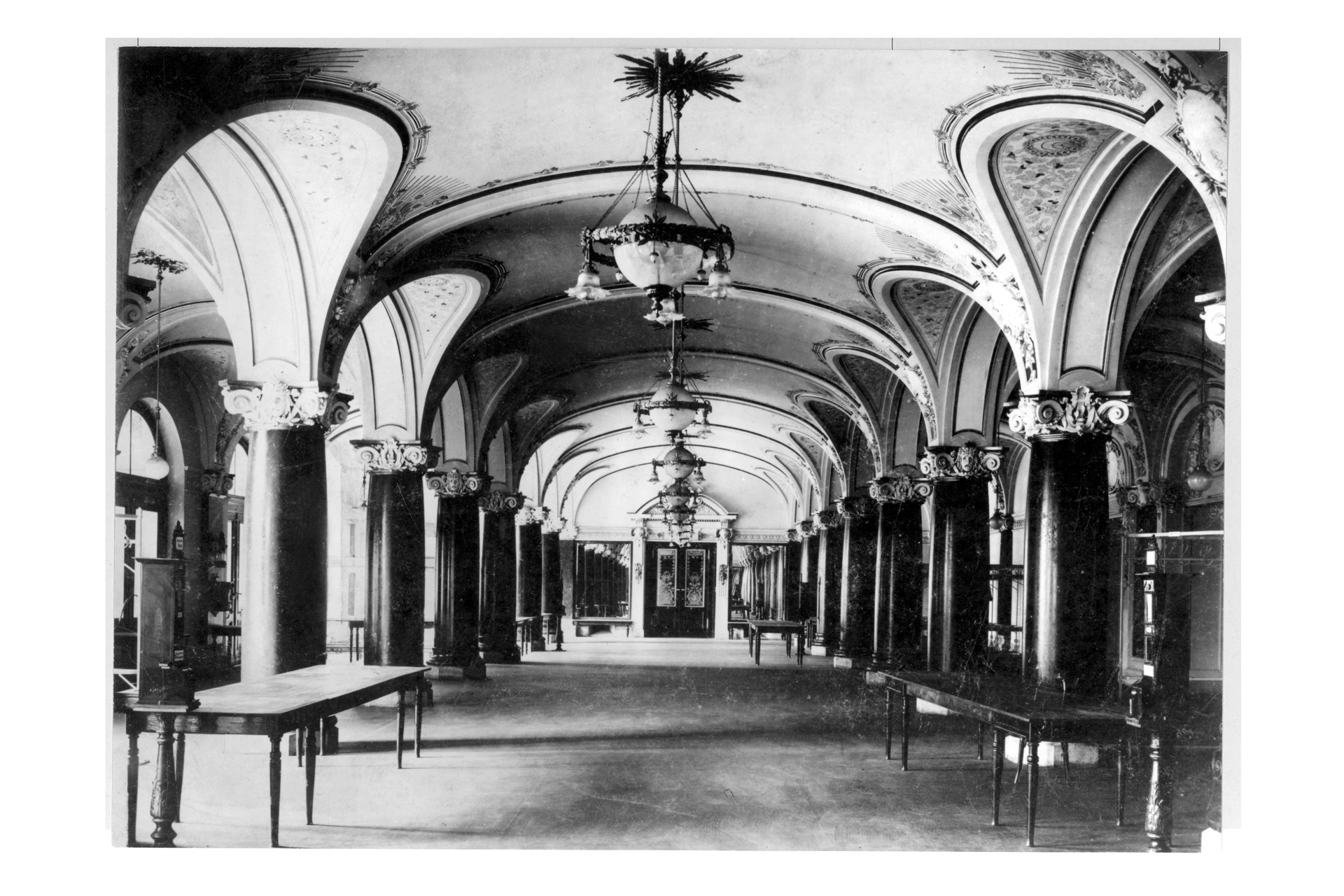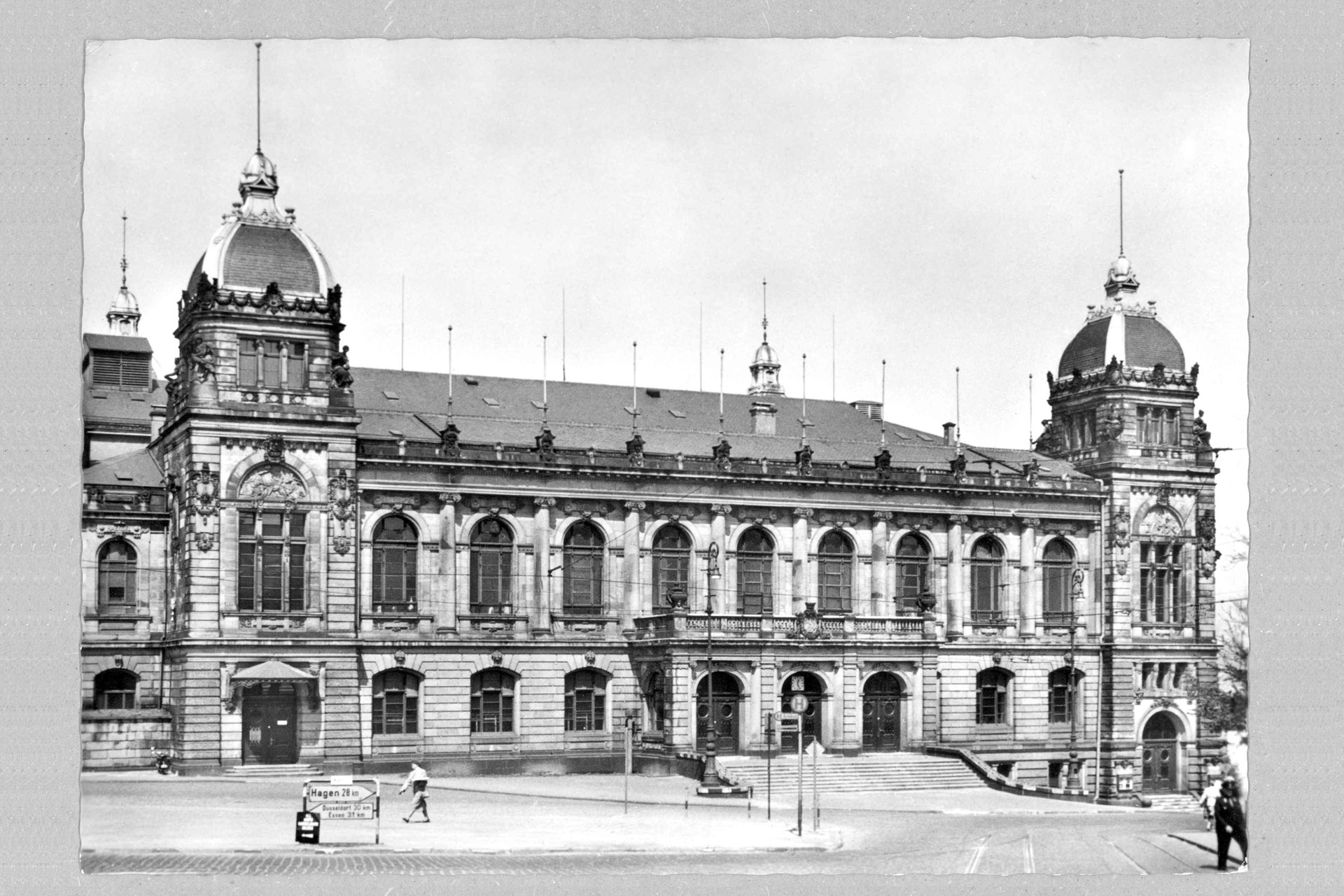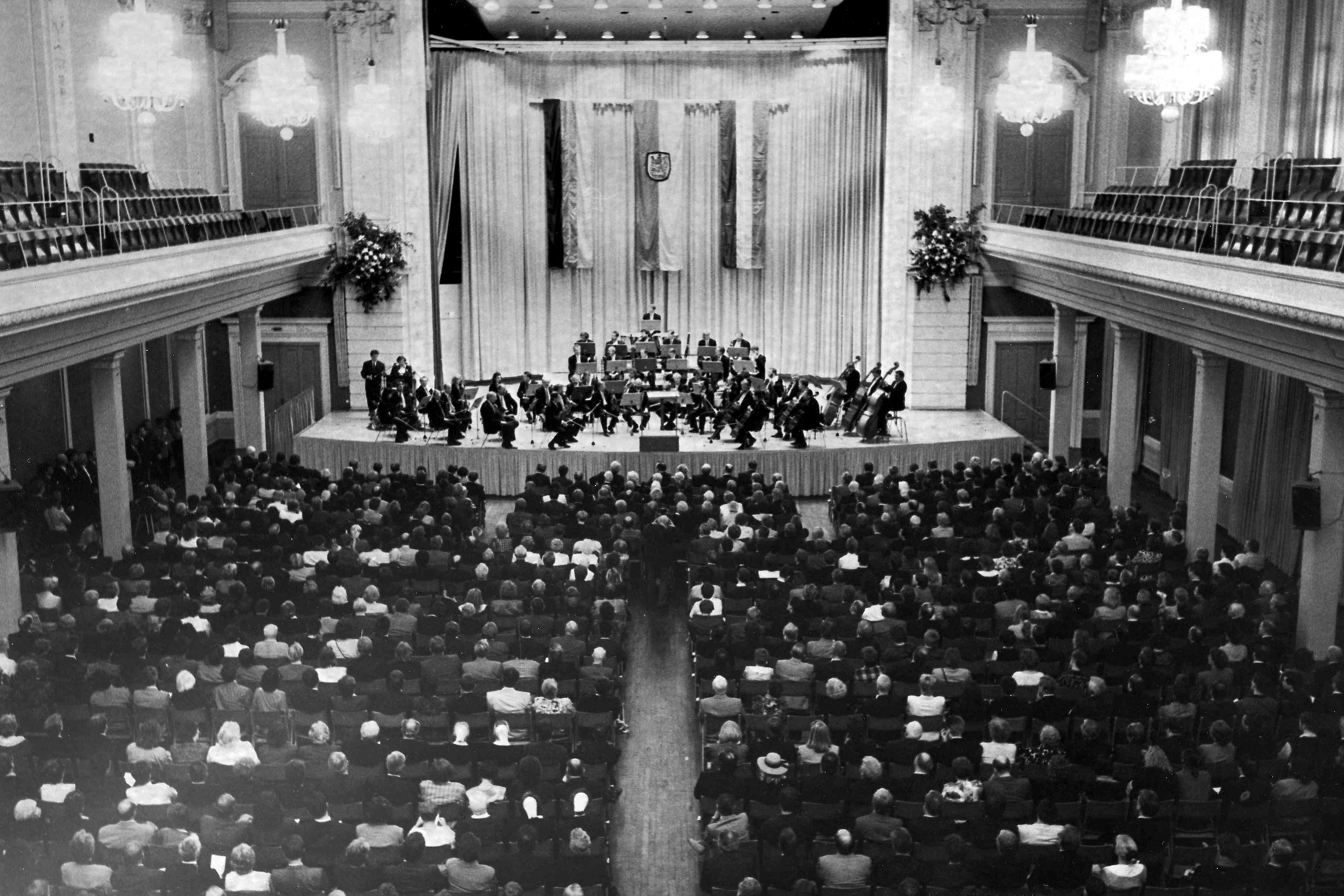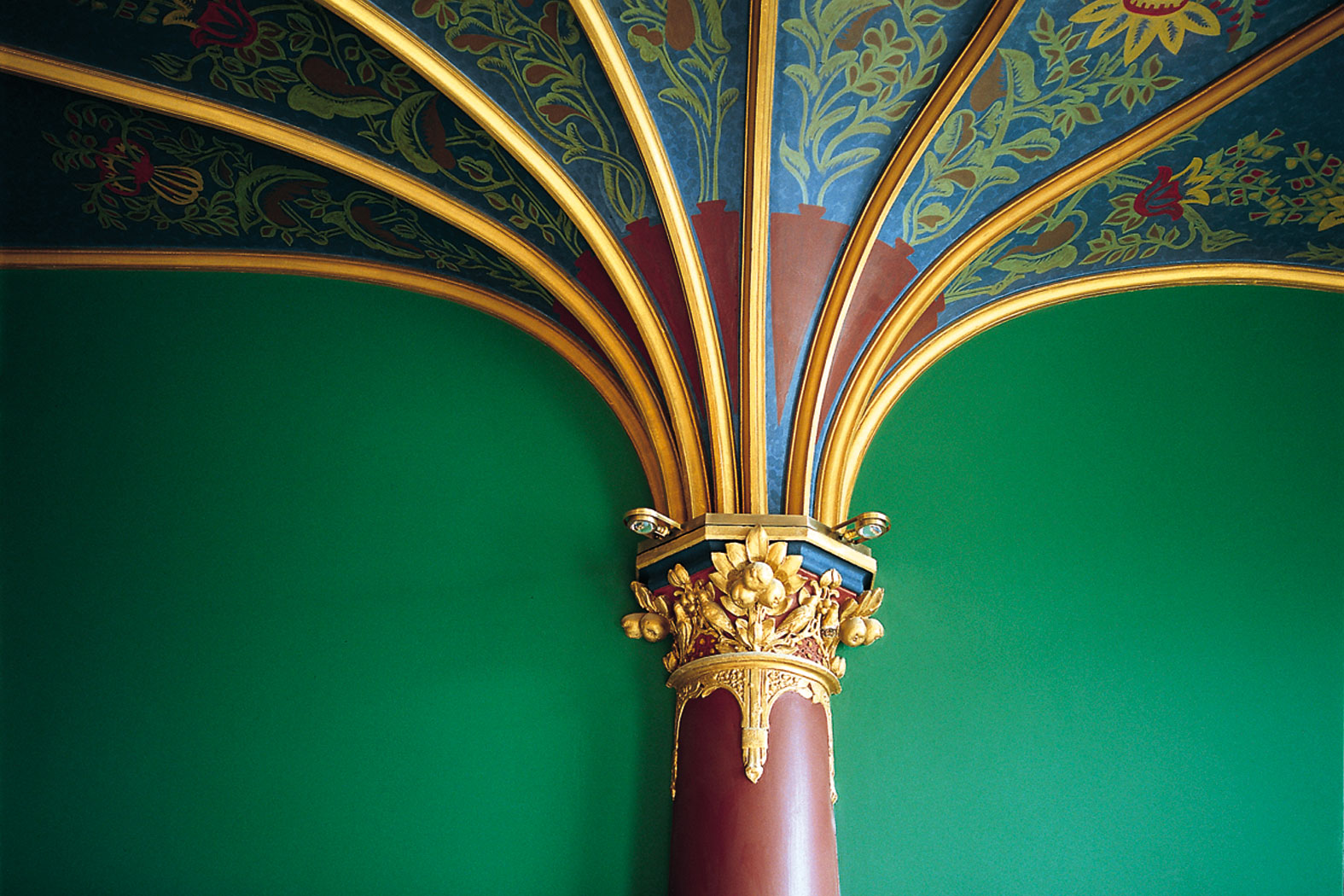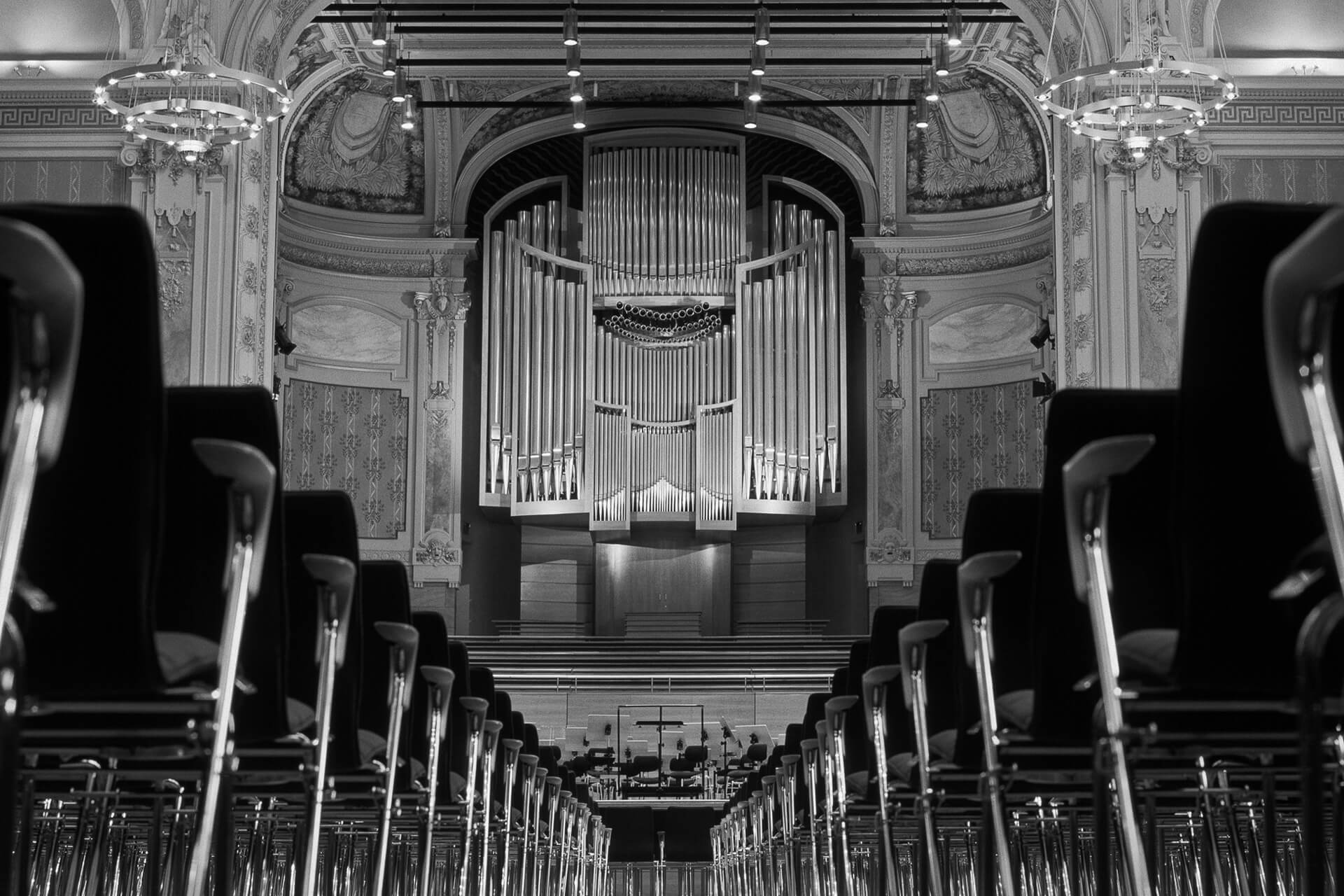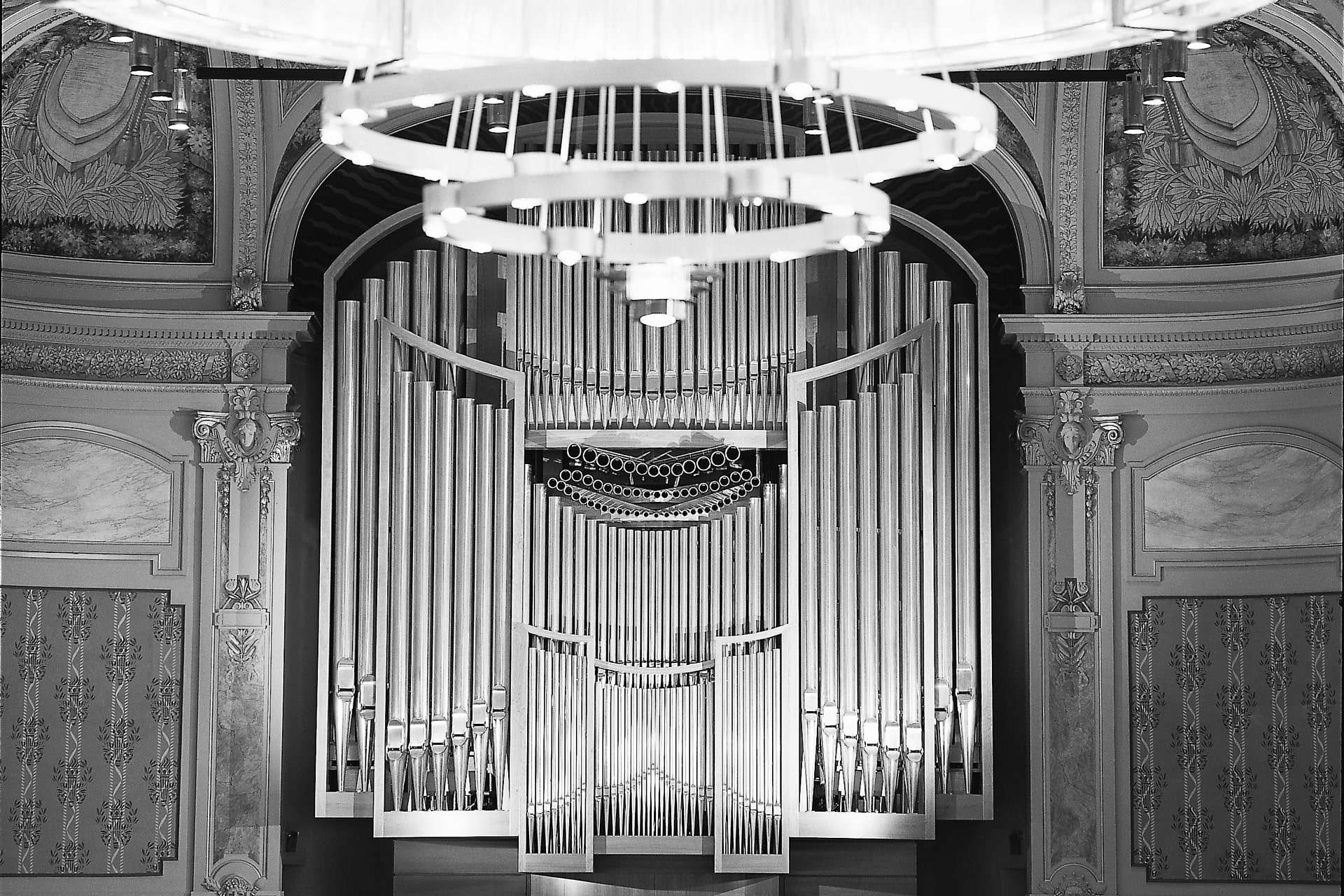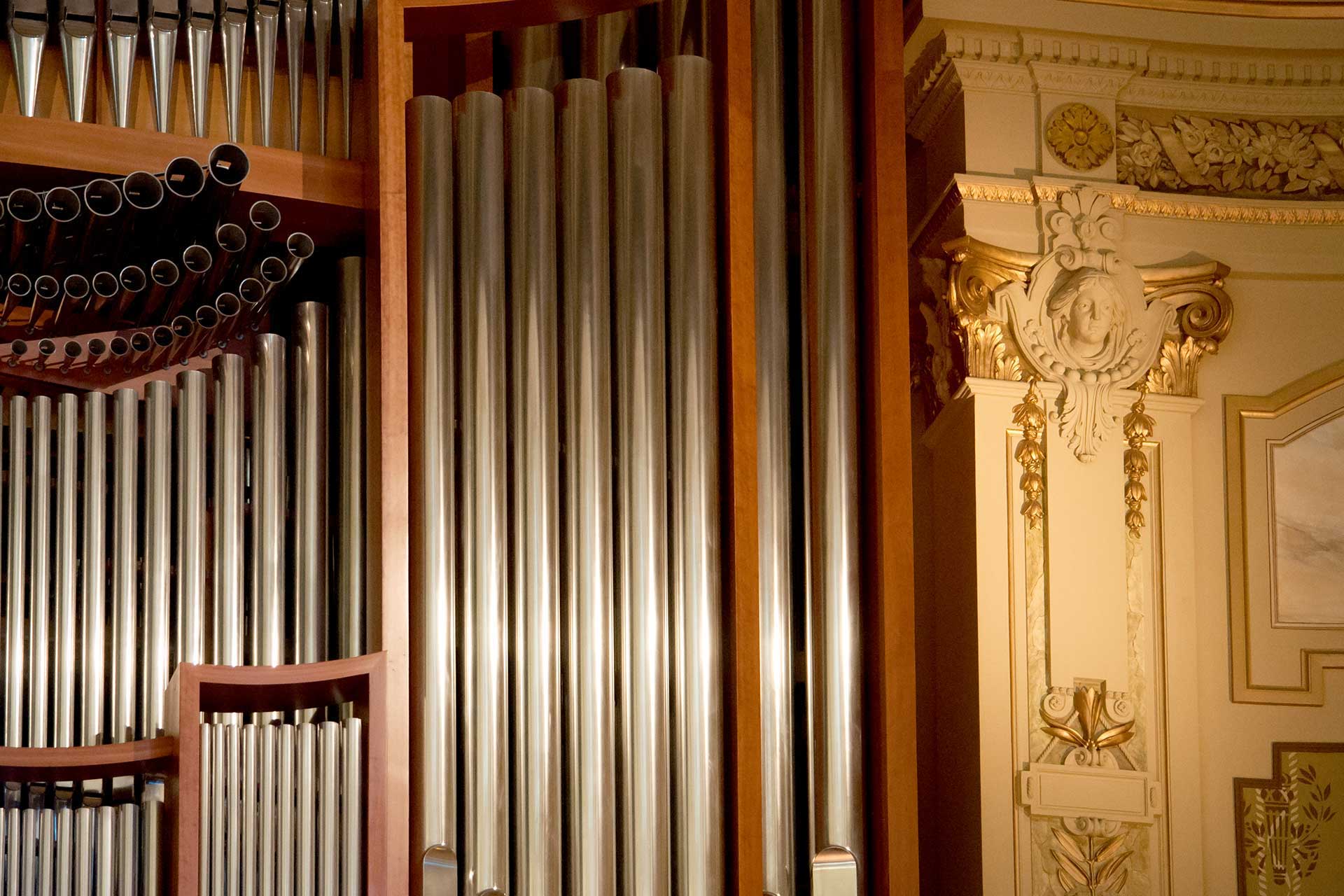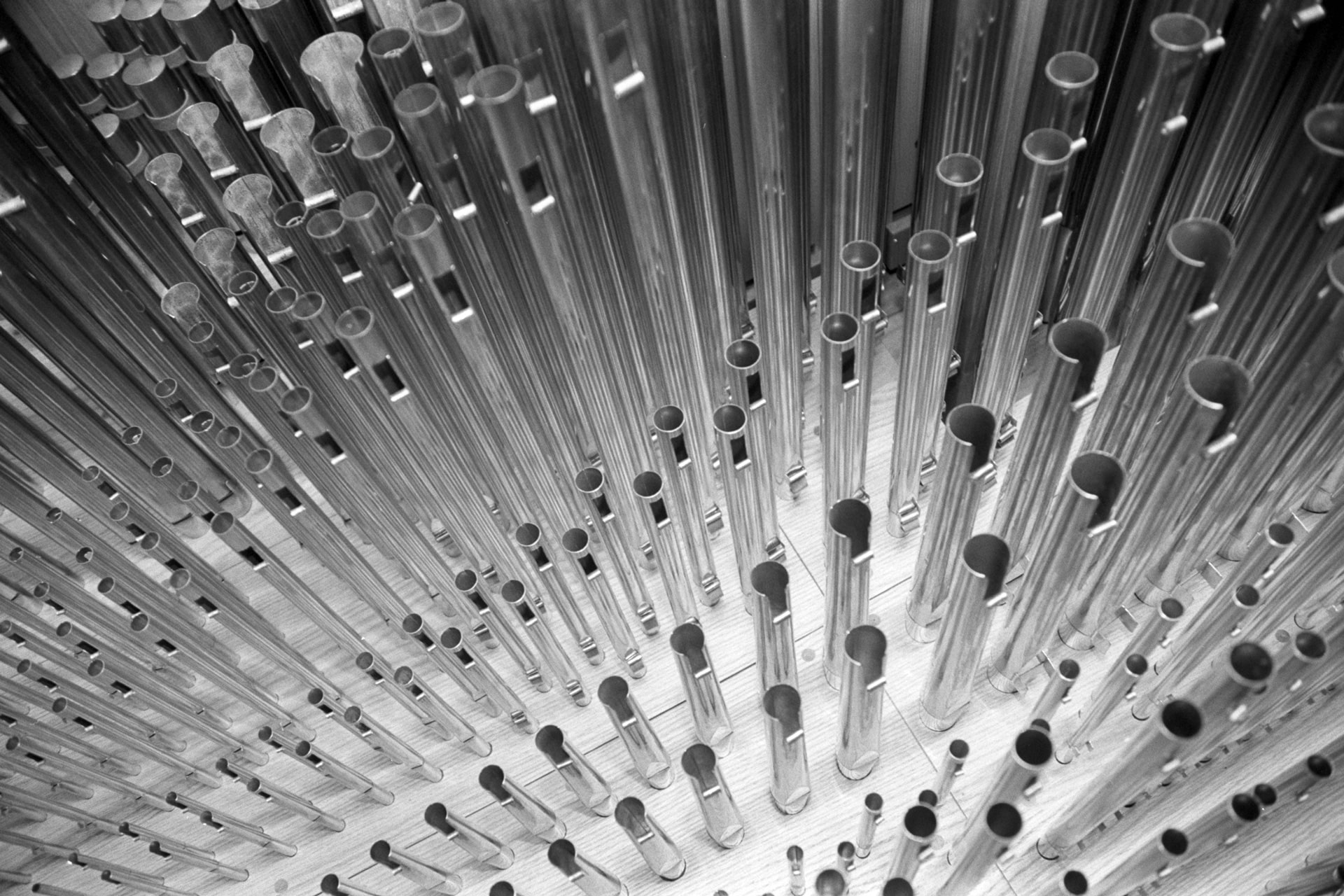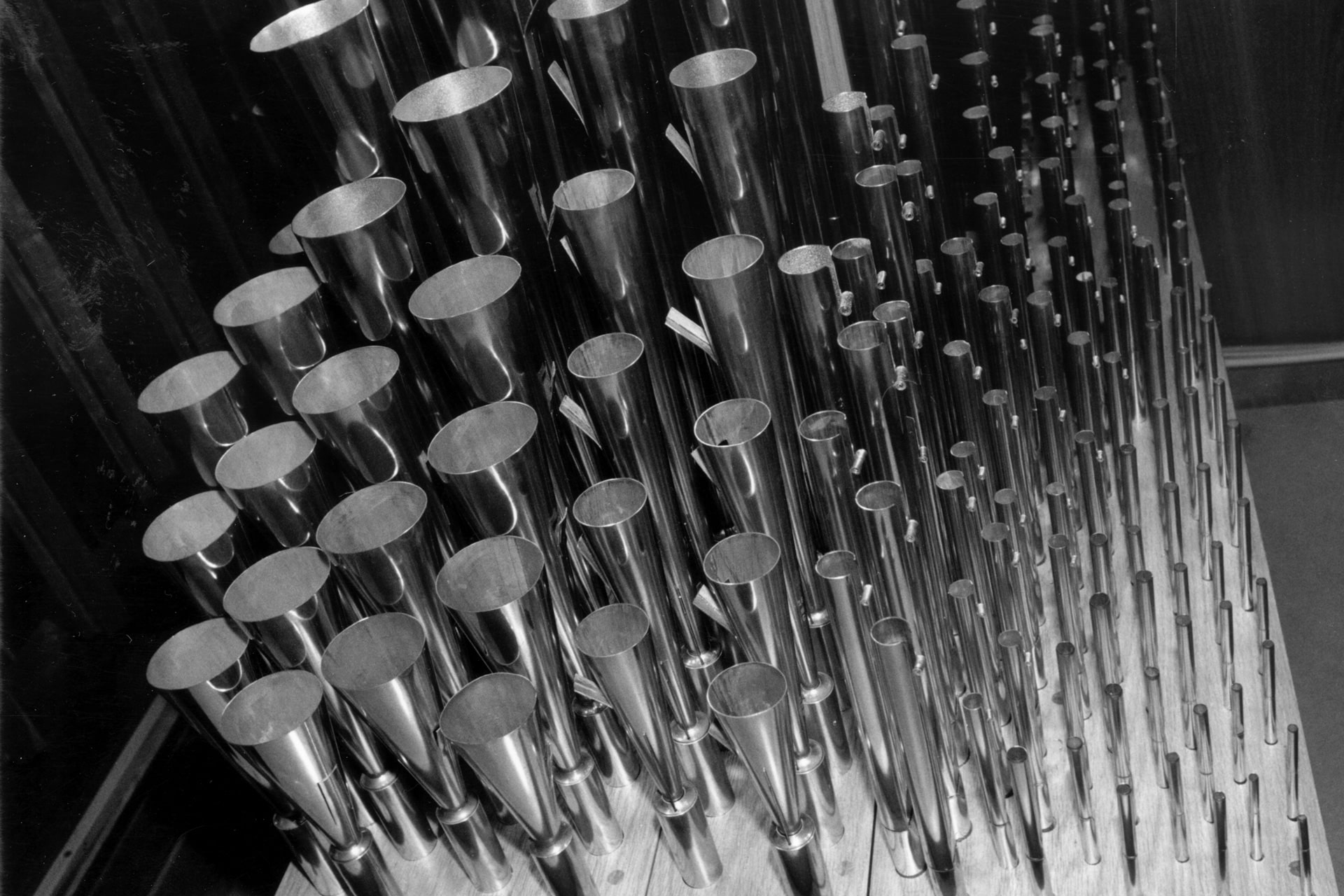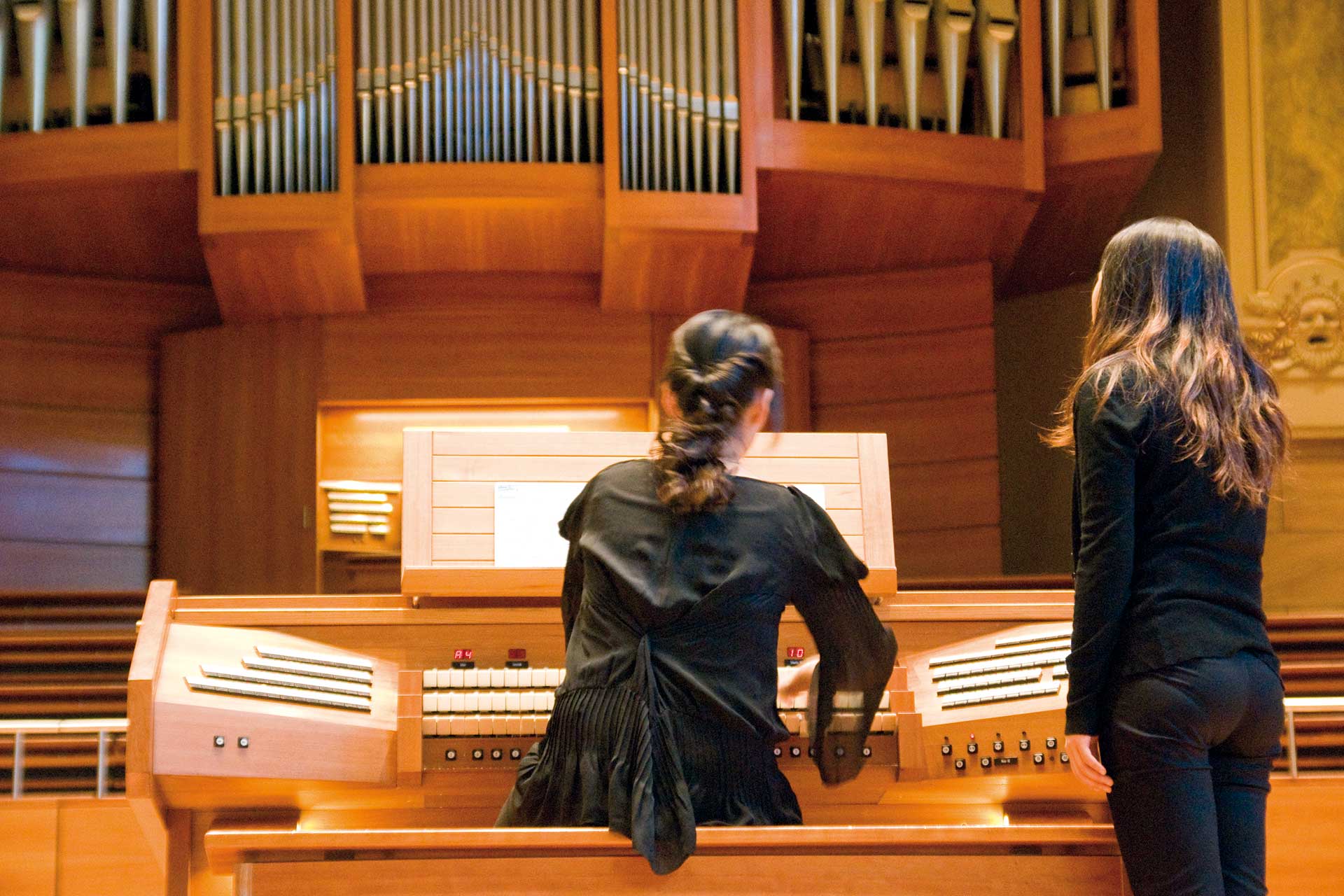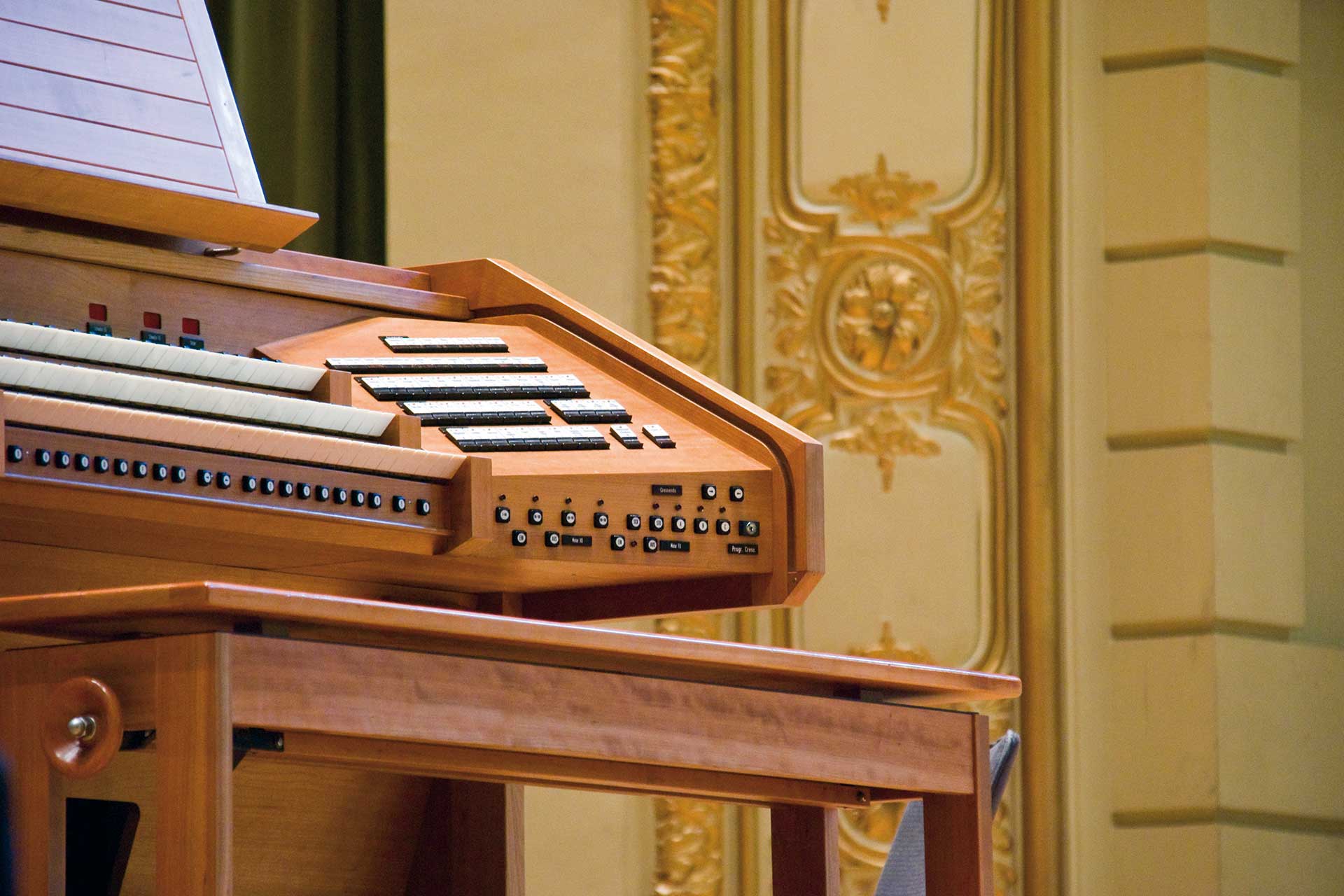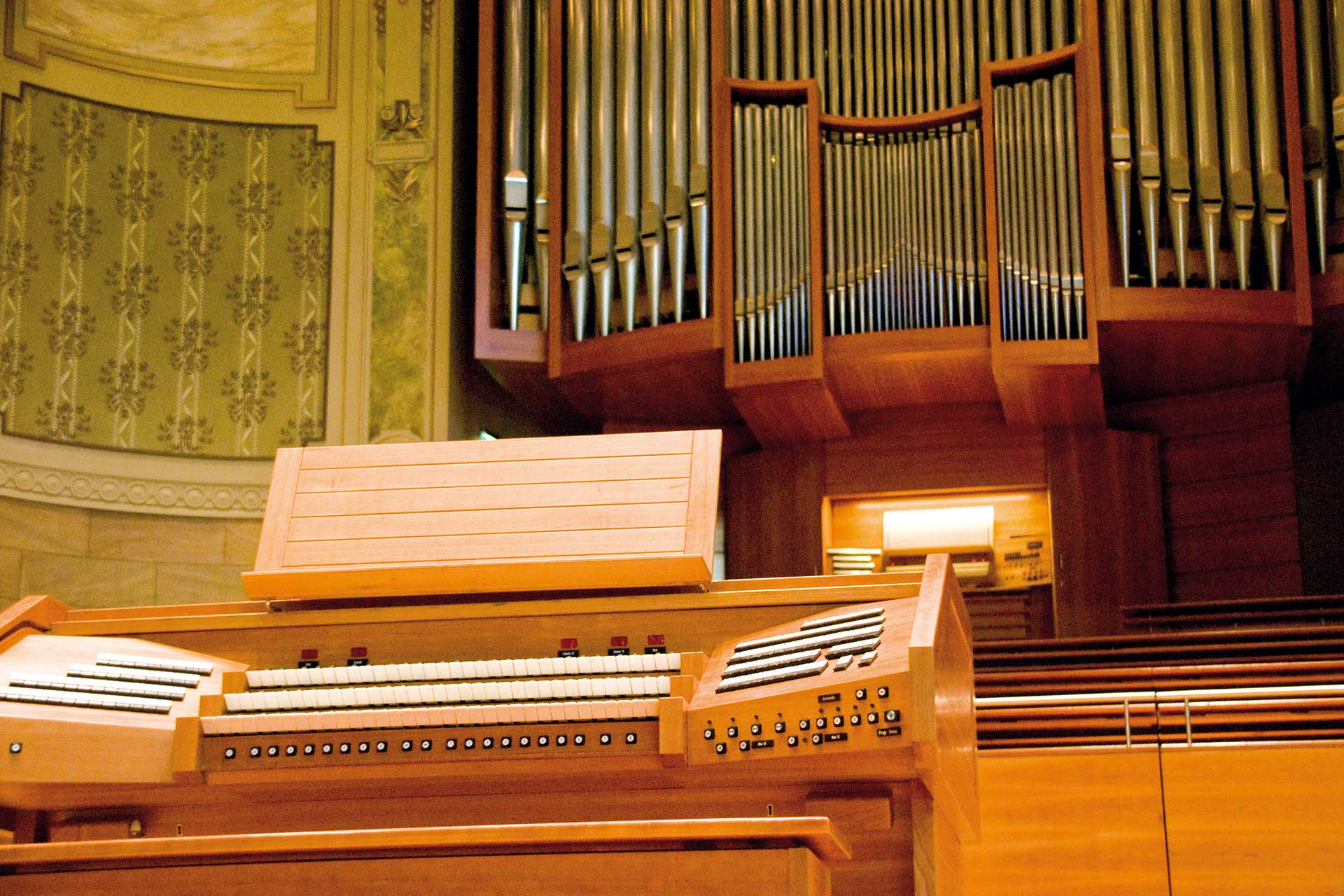Retrospective
A place with history
The ground on which the Historische Stadthalle now stands was privately owned by the Küpper family until 1894. In 1831, Abraham Küpper bought an old inn on the Johannisberg (one of the many hills on which Wuppertal is built), which had a hall seating some 1,000 people. The concerts held there may be regarded as the start of a long musical tradition on the Johannisberg. The decision to construct a concert hall and assembly room on this spot led to the announcement of an architectural competition in 1895.
The actual building phase lasted from 1896 to 1900 and the official opening of the Historische Stadthalle was celebrated from6 to 8 July 1900 with a dazzling musical festival, one of whose conductors was a young Richard Strauss.
Although the Historische Stadthalle survived both World Wars more or less unscathed, the character and appearance of the rooms were altered substantially in the fifties in keeping with the architectural taste of the day. All the pictorial elements and colourful mouldings disappeared under a layer of monochrome paint.
The Historische Stadthalle was painstakingly renovated and rehabilitated between 1991 and 1995 in order to recreate and optimize the original aesthetic and functional qualities of the edifice. On 8 December 1995, the ceremony to mark the opening of the „new“, Historische Stadthalle Wuppertal enticed 40,000 admiring visitors into rooms which had been returned to their former glory by master craftsmen. Since then, the participants and organizers of up to 500 events a year have demonstrated their undiminished enthusiasm for this architectural gem.
Acoustics
Sir Simon Rattle: “Acoustically, Wuppertal has one of the best concert halls in the world.”
A Finnish research team has scientifically proven what the international music world has already known for a long time: the Großer Saal in the Historische Stadthalle Wuppertal is acoustically among the best concert halls in Europe.
The Viennese Philharmonic feel “at home” here, the great pianist Hélène Grimaud called it an “almost magical space for music” and Sir Simon Rattle advised Munich music lovers to “take a look at Wuppertal”. Shortly after an interview with Rattle that appeared in the German newspaper Die Süddeutsche Zeitung in November 2012, Professor Tapio Lokki of Aalto University in Finland and his team announced their arrival in Wuppertal to take scientific readings of the Großer Saal.
The award-winning researcher has developed an innovative method which allows for the precise comparison of the acoustics of different concert halls. In addition to purely physical measurements, the method also takes account of sensory assessments of the room’s sound. Lokki’s conclusion: “Stadthalle Wuppertal is not very well known among acousticians worldwide. However, the hall has very nice acoustics and it should be much better known. We really liked the Stadthalle and it definitely supports the full dynamics that an orchestra can play. It is one of the best concert halls in Europe.”
The Finnish acousticians had developed a symphony orchestra simulator, the so-called “loudspeaker orchestra” and used it to capture the spatial acoustics of 19 European concert halls. In every location, it was assembled in exactly the same way so that the concert hall was the only variable factor that could influence the sound of the recordings. Later on in the lab, this allowed for an extremely precise comparison of the acoustic properties.
When listening to music from the various different concert halls using spatial sound reproduction in the lab, all subjective audio assessments were conducted using sensory test methods that revealed the different factors affecting perception in the individual concert halls. With this combination of objective and subjective sensory data, Professor Lokki’s team was able to explain the preference for certain concert halls.
The traditional “shoebox” style of architecture clearly has the edge. Europe’s acoustically best concert halls – the Concertgebouw Amsterdam, the Wiener Musikverein, the Historische Stadthalle Wuppertal and the Konzerthaus Berlin – are all built in a similar way.
We would be happy to provide further details on request.
Organ
„THE QUEEN OF INSTRUMENTS“
That was what Wolfgang Amadeus Mozart once called the organ. Having seen the magnificent example in the Großer Saal of the Historische Stadthalle Wuppertal we agree with him unreservedly. Anyone who has ever heard it, or had the thrill of playing it, goes into raptures and quickly transmits their enthusiasm to music-loving friends and colleagues.
The concert organ was donated by members of the Mittelsten Scheid family (who are partners in the Wuppertal company Vorwerk & Co.) and was built at the workshop of Siegfried Sauer in Höxter-Ottbergen. It is a technical masterpiece: the 4,706 pipes with 67 stops, nine of which are located above the ceiling of the room, are played from three manuals. In addition to the mechanical console at the base of the organ, there is a second, mobile, electrical console, linked by fibre optics, on the orchestra platform. Modern playing aids, including 256 pre-set combinations, ensure that the organ may be used not only in all types of concerts, but also in a variety of ceremonies and celebrations. More...
The new organ is the fruit of an initiative on the part of the Friends of the Wuppertal Organ Festival (WOT). A special donation scheme was started in 1989, receiving the profits from a number of benefit events, some of which were supported by local firms. Almost 30,000 DM had already been raised when the Mittelsten Scheid family, which owns the company Vorwerk & Co, decided in the summer of 1991 to donate an entire new organ for the Historic Stadthalle. A number of estimates were obtained, and the order was finally placed with Siegfried Sauer's organ-building works in Höxter-Ottbergen.
This meant that the money collected by the WOT scheme was no longer needed, but another appropriate use was soon found – the echo division of the old organ had become unusable as a result of a lack of maintenance during the Second World War. Why not restore this small additional organ, ideally suited for Romantic music? The money that had been collected was therefore re-allocated and more events, including the production of a CD, were set in motion in order to help finance the project. This was completed at the same time as the main organ, so that Wuppertal now surely has one of the most versatile concert organs in the whole of Germany.
To give you some idea of the sound of this fantastic instrument, you can listen to this exciting and impressive excerpt from the CD „Virtuoso Organ Music“ played by Andrzej Chorosinski (issued by Dabringhaus & Grimm), in which the artist interprets adaptations of symphonic programme music. Less...
TONAL REQUIREMENTS
The requirements for a concert organ far exceed those of a church organ. It must be able to meet the demands in terms of tone of performing not only music from the early Baroque, Bach's time and the Romantic period but also French organ symphonies and contemporary works. It also has to be able to be used for accompaniment and to provide a continuo; when used in conjunctionwith a large symphony orchestra it also needs body, colour and strength. But it also needs to be practical – as a solo instrument it has to be sensitive enough to match the tone shape of performers, it must provide a balance by offering a number of tone possibilities, and when working with an orchestra it is vital for the performer and the orchestra to be physically close to each other. More...
Listing these requirements also clarifies the specifications in terms of construction and layout that are needed when building a concert organ:
- slider chests
- a fixed console in the pedestal of the organ and a mobile console on the podium for working with an orchestra
- modern playing aids, particularly with sufficient combination capacity to be able to preprogramme the many registration combinations of a concert
- a wide range of wide principal, stopped and flute stops to ensure rich foundation tones in the 8' stops;
- string voices in the German Romantic tradition
- the reed and overblown flute voices characteristically used by Cavaillé-Coll in large French cathedral organs
- pedals that are equally suitable both for providing cantus firmus registrations and for ensuring a rich bass foundation
- a swell with rich tone colours that are dynamically different and effective and not least
- a layout that places the positive physically as close as possible to the choir platform and the orchestra podium.
Comparing the organ's construction and specifications with these requirements reveals that the Historic Stadthalle's new organ meets most of these prerequisites, although not all were possible because of financial limitations. With 65 stops, it is certainly not a universal instrument. It is however so well-provided in terms of differing tones that it is entirely suitable for performances of music from the major periods of organ literature.
More specifically, there is a good range of fundamental 64', 32', 16' and 8' flue stops for the pedals. There are also two 4' stops, and 32', 16' and 8' mixtures and reeds. There is also a powerful bass foundation for the plenum, making it possible to play a cantus firmus with different tone colours.
The great organ has a comprehensive set of principal stops ranging from 16' to two mixtures stops of 2' (Mixtur V) and 1 1/3' (Acuta IV). The latter has the double function of firstly lightening the 2' Mixture further upwards, and also making possible a light Mixtur plenum which is a not infrequent feature of organ music into the late Baroque period. The trumpet ranks, in the German manner in 16', 8' and 4', give the great organ strength and richness. As a solo stop, the high-banked Cornett V is particularly characteristic. Less...
SPECIFICATIONS OF THE CONCERT ORGAN
| Pedalwerk C to g‘ – 120*/95 mm head of water) | ||
| Untersatz (ak.)* | 64‘ | |
| Bordun* | 32‘ | |
| Prinzipal | 16‘ | |
| Violonbass | 16‘ | |
| Subbass | 16‘ | |
| Oktavbass | 8‘ | |
| Gedacktbass | 8‘ | |
| Tenoroktave | 4‘ | |
| Bassflöte | 4‘ | |
| Hintersatz | V | 2 2/3‘ |
| Kontrafagott | 32‘ | |
| Posaune | 16‘ | |
| Trompete | 8‘ | |
| Hauptwerk C to a‘‘‘ – 84 mm head of water (manual I)] | ||
| Praestant | 16‘ | |
| Prinzipal | 8‘ | |
| Doppelflöte | 8‘ | |
| Viola da Gamba | 8‘ | |
| Oktave | 4‘ | |
| Hohlflöte | 4‘ | |
| Quinte | 2 2/3‘ | |
| Superoktave | 2‘ | |
| Cornett | V | ab c° 8‘ |
| Mixtur | V | 2‘ |
| Acuta | IV | 1 1/3‘ |
| Trompete | 16‘ | |
| Trompete | 8‘ | |
| Trompete | 4‘ | |
| Positiv C to a‘‘‘ – 77 mm head of water (manual II) | ||
| Praestant | 8‘ | |
| Holzgedackt | 8‘ | |
| Quintade | 8‘ | |
| Prinzipal | 4‘ | |
| Rohrflöte | 4‘ | |
| Quinte | 2 2/3‘ | |
| Schwegel | 2‘ | |
| Terz | 1 3/5‘ | |
| Superquinte | 1 1/3‘ | |
| Scharff | IV | 1‘ |
| Dulcian | 16‘ | |
| Cromorne | 8‘ | |
| Tremulant | ||
| Schwellwerk C to a‘‘‘ – 88 mm head of water (manual III) | ||
| Bourdon | 16‘ | |
| Principal | 8‘ | |
| Bourdon | 8‘ | |
| Flûte harmonique | 8‘ | |
| Gambe | 8‘ | |
| Voix céleste | ab c° 8‘ | |
| Praestant | 4‘ | |
| Flûte octaviante | 4‘ | |
| Nasard | 2 2/3‘ | |
| Octavin | 2‘ | |
| Tierce | 1 3/5‘ | |
| Sifflet | 1‘ | |
| Fourniture | V | 2 2/3‘ |
| Basson | 16‘ | |
| Tromp. harmonique | 8‘ | |
| Hautbois | 8‘ | |
| Voix humaine | 8‘ | |
| Clairon harmonique | 4‘ | |
| Tremulant | ||
|
Echo C to a‘‘‘ – 102 mm head of water | ||
| Stillgedackt | 16‘ | |
| Fernflöte | 8‘ | |
| Salicional | 8‘ | |
| Vox angelica | ab c° 8‘ | |
| Fugara | 4‘ | |
| Flauto dolce | 4‘ | |
| Violine | 2‘ | |
| Harmonia aeth. | 2 2/3‘ | |
| Glockenspiel | ab g° 4‘ | |
| Solo C to a‘‘‘ – 245 mm head of water can be coupled to any keyboard | ||
| Tuba mirabilis horiz. | 8‘ | |
| 4.706 pipes - slider chests | ||
PROJECT INFORMATION
|
Console in the pedestal of the organ: Playing aids: Specifications: |
Case design: Voicing: Project managment: Consultants: Sigfried Sauer, formerly A. Feith, founded in 1840, |

